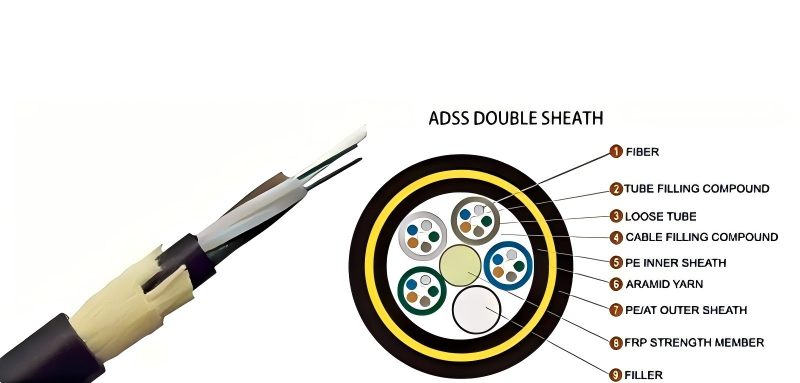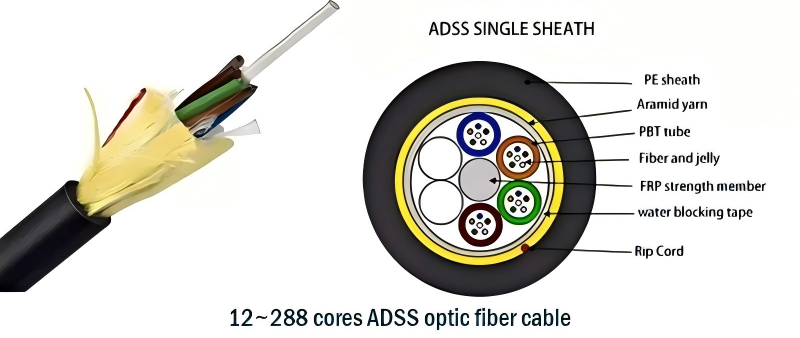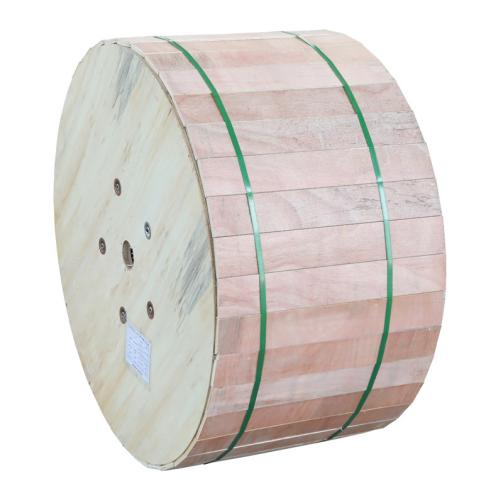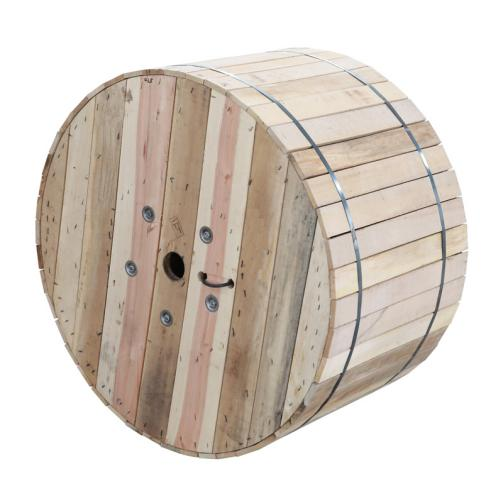ADSS (All-Dielectric Self-Supporting) օպտիկ կաբելն դա բարձր համարյալ հասարակագործակցության ցանցի արտադրանք է։ Այն չունի մետաղ, դիրքային է, ինքնուրույն է, բարձր իզոլյացիայով է, ոչ ինդուկտիվ է, հանգիստ է, 軽 է, հեշտ է կառուցելու և տնտեսություններով է արդյոք։ Դա composite optical cable է, որը ստեղծվում է օպտիկ վեցորդի պատճենում central reinforcement-ի շուրջ և իզոլյացիայի, ջուրանցման դիմաց պահպանման, ուժացման և sheathing-ի պաշտոնների վրա վերցնելով։
 |
 |
ADSS հիմնական օգտագործումը:
(1) Օգտագործեք այն OPGW համակարգի ստացիա կամ դուրս գալի մագնիսային կաբելի որպես։ Համապատասխան ան전ուրույնության հատկությունների հիման վրա, այն լավ լուծում է էլեկտրոնային հանգումների խնդիրը ստացիաների մեջ մուտքի և դուրս գալիս։
(2) Օգտագործեք այն որպես տարածումային մագնիսային կաբել օպտիկ մագնիսային կոմունիքացիոն համակարգում բարձր դասակարգի (110կՎ-220կՎ) էլեկտրոնային ցանցում։ Մասնավորապես, շատ տեղերում հարմար է օգտագործվել այն հին կոմունիքացիոն գծերի նորացման ժամանակ։
(3) Используйте его в оптической системе связи в распределительной сети 6кВ~35кВ~180кВ.
Преимущества ADSS оптических кабелей
Высокая надежность: Устойчивость к электрическим помехам и жестким климатическим условиям.
Экономичность: Сниженные затраты на установку благодаря самонесущему характеру.
Гибкость: Подходит для различных применений, включая длинные пролеты и высоковольтные среды.
Դուրաբիլություն. Երկար տարեկանություն և նվազագույն պահովման պահանջներ։
Տիպիկ սպաններ
ADSS քաղաքները կարող են սպան սոցնել 50 մետրից մինչև 1000 մետրի վերաբերյալ, կախված քաղաքի տեխնիկական պարամետրերից և շրջադատարանից։ Ավելի երկար սպանների դեպքում, հաճախ պետք է օգտագործել ստեղծագործական տրամադրված ADSS քաղաքներ։
Դիմումներ aDSS օպտիկամանրաթելային մալուխների
ADSS օպտիկական քաղաքները լայնորեն կիրառվում են տարբեր սենաrioներում, շնորհիկավորելով իրենց բազմակի և կարողանուն դիզայնին։
Ավանդական փոխահատումների գծեր
ADSS քաբելները օդավոր էլեկտրական ցանցերի վրա ստանդարտացված են, քանի որ դրանց դիելեկտրիկ նյութերը կարող են պարագայել էլեկտրական 섭երից:
Երկիրական և հեռավոր տարածքներ
Երկար հեռավորություններ անցնելու կարողությամբ միջավայրային սահմանափակումների առկայության չունեցմամբ, ADSS քաբելները հաճախ են օգտագործվում երկիրական կամ հեռավոր տարածքներում, որտեղ կառավարման համակարգը բազմացանցային չէ:
Քաղաքացի տեղեկատվություն
Այդ կաբելները նաև օգտագործվում են խիստ քաղաքացի միջավայրում, որտեղ արդեն առկա հաճախորդավազները կամ թավագները կարող են սպասարկողներ լինել, նվազեցնելով նոր ինֆրաստրուկտուրայի պահանջը:
Կոչող միջավայրեր
ADSS կաբելները լավ են համապատասխանում արդյունքային աշխարհական պայմաններուն ունեցող տարածքների համար, ներառյալ անձրեւություններ և ուժեղ 바դի, որոնք համոզված ցանցի աշխատանքը guarantee:
 |
 |